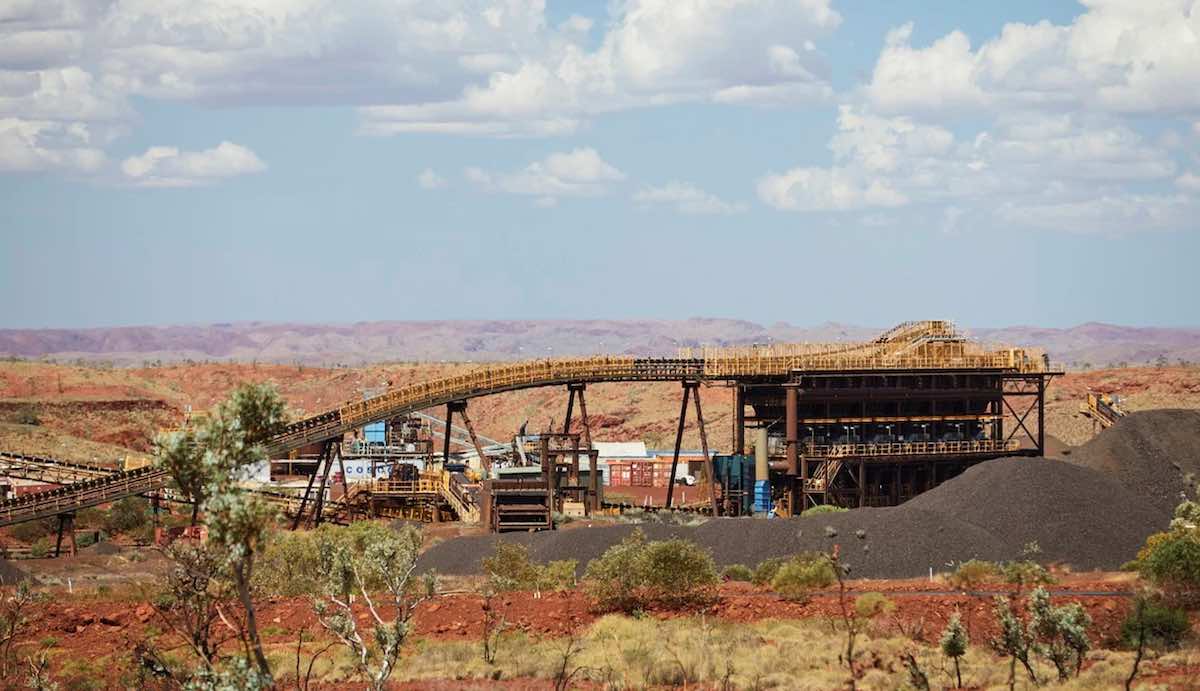Fortescue Metals Group (FMG) has commenced production of high-quality magnetite iron ore from the Iron Bridge mine with an annual capacity of 22 million tonnes. This development presents an excellent opportunity to address the potential scarcity of DR-grade iron ore needed to support the steel sector technology transition.
Direct reduced iron (DRI) based steelmaking does not use coal, and can be based on green hydrogen in the future.
With available technologies, the steel industry’s transition towards DRI requires a significant supply of high-grade iron ore, but the typical hematite-goethite ores found in the Pilbara region are not suitable for beneficiation to higher grades.
Additionally, previous ironmaking efforts by miners in this region, such as BHP’s Boodarie iron plant and Rio Tinto’s HIsmelt, have been unsuccessful. However, the emergence of new magnetite mines could transform the current landscape of the iron ore mining industry.
Fiona Hick, FMG’s newly appointed CEO, said 5.3 million tonnes of magnetite product had been sold to five different steelmakers via a 2019 off-take agreement.
The company has been evaluating the market to find out the interest of the other customers to sell pure magnetite concentrate or blend it with lower-grade iron ore, which contains iron below 59%, to achieve higher margins.
Furthermore, Fortescue is eyeing adjacent magnetite mines to increase the production of high-grade iron ore. Reserves the size of the Iron Bridge mine possess the potential to produce significant amounts of high-quality iron ore.
The efficiency of utilising precious magnetite ores relies on the technology employed by end users. While it is possible to convert these high-grade ores into pellets suitable for the DRI- EAF pathway to produce low-emissions steel, consuming them in conventional coal-based blast furnaces would result in huge amounts of carbon emissions.
As FMG continues to overcome the learning curve and operate at full capacity, it is crucial to keep a close eye on where the final products will be utilised and how they can contribute towards promoting green steel production.
Fortescue mining division is forecast to spend $US2.7 to $US3.1 billion in mining-related capital expenditure globally in 2022-2023.
Australian miners have concentrated their efforts on the Pilbara region for many years, and more than 96% of the nation’s iron ore exports come from this area.
The lucrative mining operations in the Pilbara is one of the reasons that have deterred Australian miners from investing more in magnetite mines, which typically need more investment compared with hematite direct shipping ores (DSO) mining.
The growing momentum of the transition in the steel sector has prompted Australia’s iron ore industry to actively participate in the emerging high-grade iron ore market by further exploring magnetite iron ore.
Magnetite ores represent 38% of Australia economic demonstrated resources of iron ore, of which 81% are in Western Australia, while only 3% of the states’ exports come from magnetite ores.
Geological studies have found evidence of potential magnetite ores in South Australia. The state’s magnetite iron ore reserves total 16 billion tonnes, of which 6 billion tonnes are identified as economically demonstrated resources.
Magnetite is enabling a steel technology transition in South Australia
Liberty Steel announced on 4 March it would phase out its existing blast furnace at Whyalla Steelworks and build a new DRI-EAF. It will initially consume natural gas and hydrogen before shifting completely to green hydrogen. The company has already tested the possibility of producing DR-grade iron ore pellets from existing magnetite ores in South Australia.
Whyalla’s Carbon Neutral by 2030 plan (CN30) is focused on producing 15 million tonnes of high-quality magnetite iron ore, from which 10 million tonnes of green DRI will be produced for the both domestic and export market.
Sanjeev Gupta, the executive chairman of LIBERTY Steel Group, highlighted the prominent position of Whyalla for decarbonisation. “Our magnetite expansion plans, coupled with South Australia’s endless resource for renewable energy and green hydrogen, the potential for Whyalla has no bounds,” he said.
Conversely, the Australian biggest steelmaker, BlueScope, plans to reline its No.6 blast furnace at Port Kembla steelworks. BlueScope’s recommitment to blast furnace-based steelmaking risks making it look like a climate laggard, particularly given the transition planned at Whyalla.
While BlueScope maintains green steel technologies are not yet ready, other steelmakers in Europe, as well as producers in the Middle East and Northern Africa (MENA) and now Whyalla, the only other Australian primary steelmaker, have already announced a transition to DRI-based steelmaking.
Mark Vassella, BlueScope’s chief executive, said safeguard mechanism reform has “materially alleviated” his concerns about the future of steelmaking in Australia.
The revised package will force Australia’s big emitters to reduce their emissions by 5% per year by 2030, while hard-to-abate sectors, including steel, need only reduce emissions by 1%. The government’s green light to BlueScope to implement the blast furnace refurbishment may cause BlueScope to fall behind Australia’s energy transition efforts.
To ensure meeting carbon emissions targets, and manage scope 3 emissions associated with iron ore mining, Australia should maximise investment in magnetite mines both for domestic use and export. In the future, Fortescue’s magnetite could be shipped as DR-grade ores as the global transition away from blast furnaces and towards lower-carbon DRI-based steelmaking accelerates. Fortescue has a target to reduce its Scope 3 emissions to net zero by 2040.
The other two iron ore majors in Australia – Rio Tinto and BHP – do not have measurable Scope 3 emissions reduction targets.
Additionally, careful monitoring and tracing of the consumption of high-grade iron ore is essential, ensuring that it is directed towards markets that are deploying low emissions technology to prevent valuable resources from being allocated to polluting producer.
Soroush Basirat is an energy finance analyst with IEEFA Australia, examining the global steel sector with particular focus on green technology transition.








